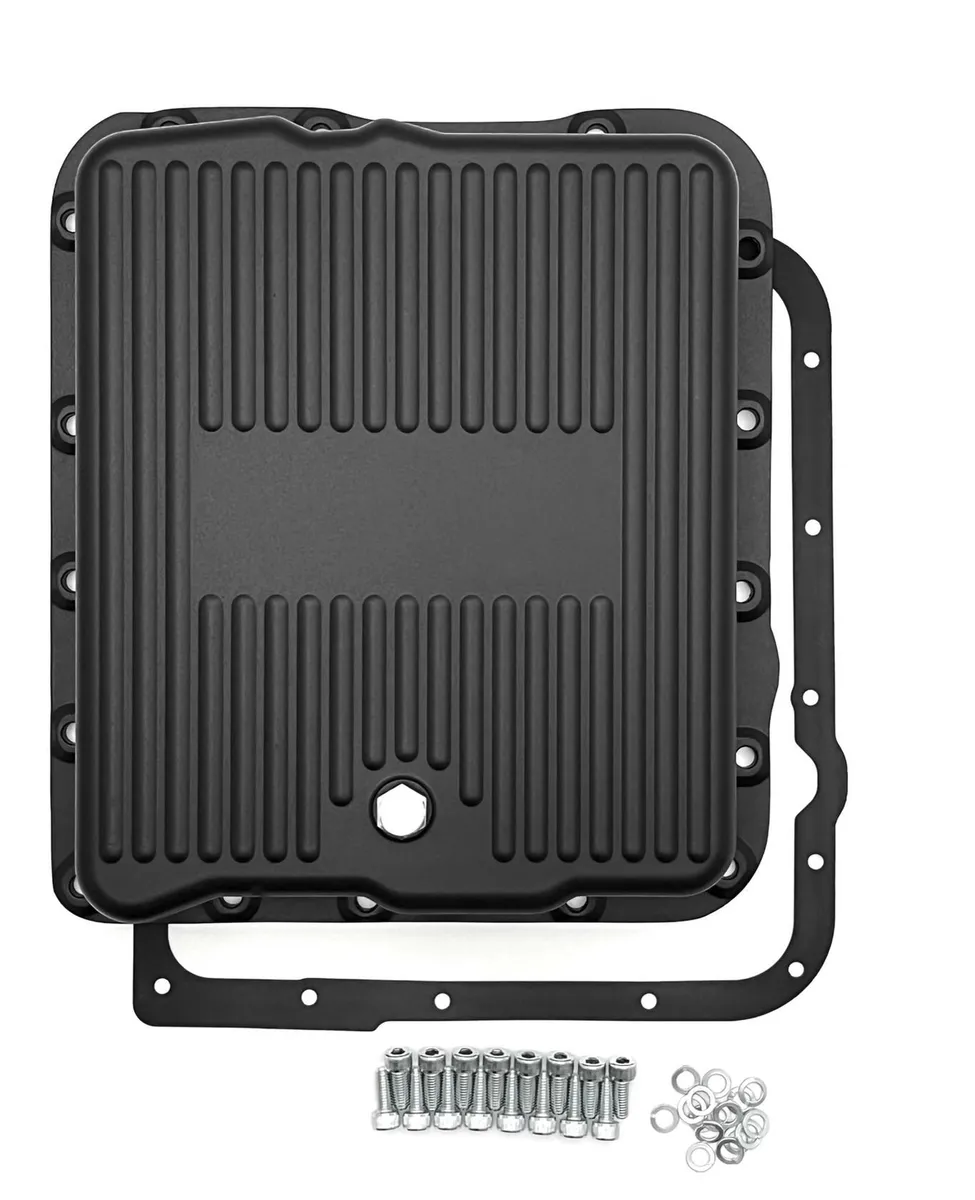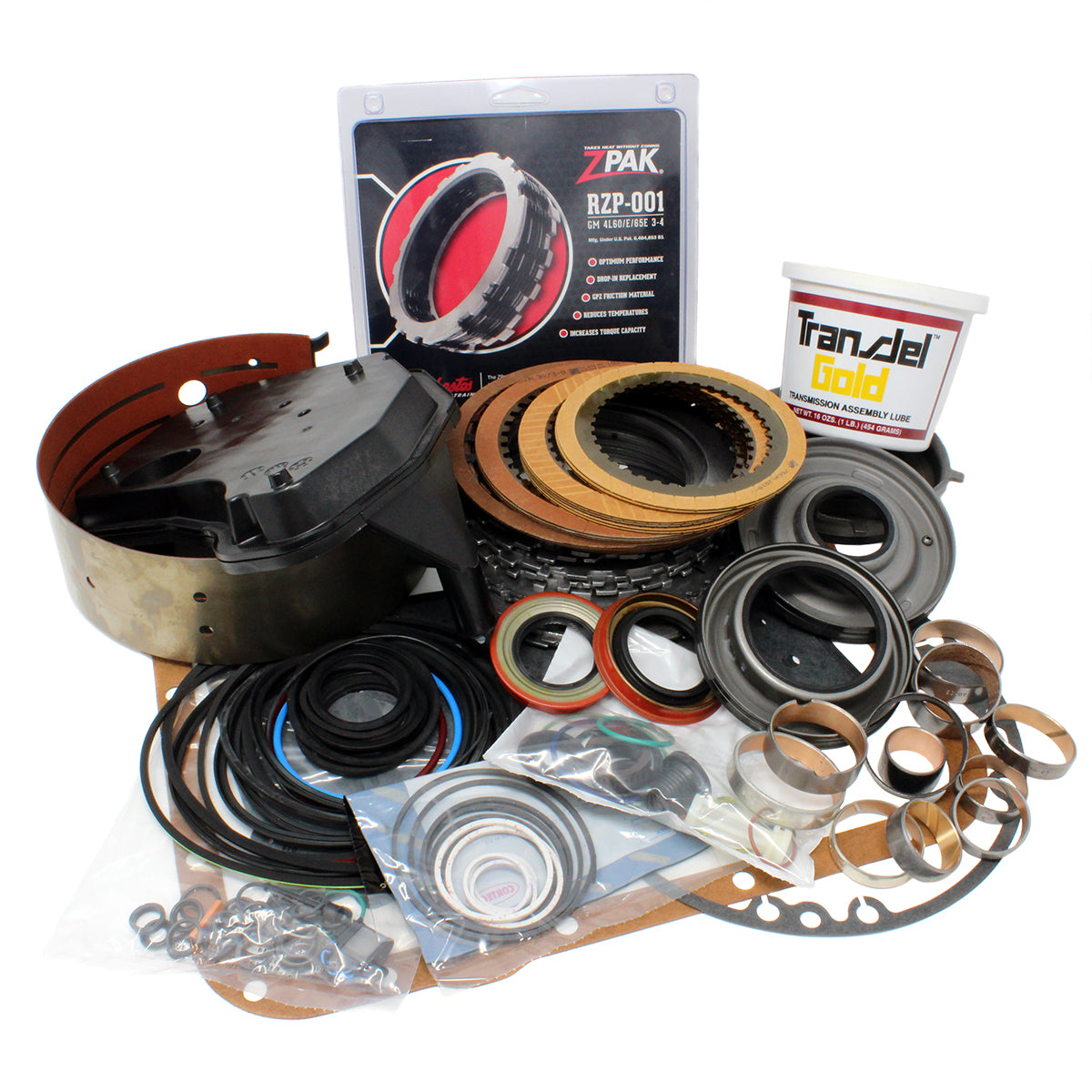The 4L60E transmission fluid capacity is 11 quarts. The recommended fluid type is Dexron III.
The 4L60E transmission, found in many GM vehicles, requires proper fluid levels to ensure smooth operation and longevity. Understanding the correct fluid capacity is essential for proper maintenance. By adhering to the manufacturer’s recommendations, you can ensure your transmission operates at its best.
Regular fluid changes are crucial for extending the life of your transmission and preventing costly repairs. This transmission is widely used in various vehicle models, making it essential to know the correct fluid capacity for proper maintenance. Understanding the specifications for your transmission fluid capacity will help you maintain the health and performance of your vehicle’s transmission system.


Credit: www.ebay.com
- Understanding Transmission Fluid Capacity
- Factors Influencing Fluid Capacity
- Benefits Of Maintaining Proper Fluid Level
- How To Check And Top-up Fluid Level
- Consequences Of Incorrect Fluid Levels
- Importance Of Regular Fluid Changes
- Frequently Asked Questions For 4l60e Transmission Fluid Capacity
- Conclusion
Understanding Transmission Fluid Capacity
The 4L60E transmission fluid capacity is crucial for maintaining proper performance. Understanding the correct fluid level ensures smooth gear shifting and overall longevity. Regularly checking and topping up the fluid level is vital for optimal transmission function and to prevent potential damage.
Understanding Transmission Fluid Capacity In automatic transmissions like the 4L60E, transmission fluid is crucial for proper functioning. Transmission fluid capacity plays a vital role in ensuring the longevity and optimal performance of the transmission system. Therefore, it’s essential to understand its significance and the implications of operating above or below the recommended capacity. What is Transmission Fluid Capacity? The transmission fluid capacity refers to the amount of fluid required to fill the transmission system to its optimal level. In the case of the 4L60E transmission, the fluid capacity varies based on the specific model and configuration. Understanding the correct capacity for your transmission is paramount for maintaining its efficiency and durability. Significance of Optimal Capacity Ensuring that your 4L60E transmission is filled with the appropriate amount of fluid is essential for several reasons. Firstly, an insufficient amount of fluid can lead to increased friction and heat within the transmission, potentially causing damage and premature wear. Secondly, overfilling the transmission can also have detrimental effects, such as fluid foaming and aeration, which compromises the system’s lubrication capabilities. Maintaining optimal fluid capacity helps to facilitate smooth gear shifting, heat dissipation, and overall transmission performance. Consequently, adhering to the recommended capacity guidelines provided by the manufacturer is crucial for ensuring the longevity and reliability of your 4L60E transmission. In conclusion, understanding transmission fluid capacity is vital for the proper maintenance and performance of the 4L60E transmission. By adhering to the recommended fluid capacity and regularly checking and servicing the fluid level, you can ensure the smooth operation and longevity of your transmission system.
Credit: www.amazon.com
Factors Influencing Fluid Capacity
The fluid capacity of a 4L60E transmission is influenced by factors such as the size of the transmission pan, the type of torque converter used, and the overall design of the transmission system. These factors can determine the exact volume of fluid required for optimal performance and longevity.
Factors Influencing Fluid Capacity Vehicle Model and Year The fluid capacity of a 4L60E transmission can vary depending on the vehicle model and year. Each vehicle is designed with specific requirements for transmission fluid, and these requirements can impact the amount of fluid the transmission can hold. It’s essential to consult the vehicle’s manual or a reliable source to determine the exact fluid capacity based on the model and year of the vehicle. Driving Conditions and Habits The driving conditions and habits of a vehicle owner play a significant role in determining the transmission fluid capacity. Vehicles that are frequently used for towing, hauling heavy loads, or experiencing stop-and-go traffic may require more frequent transmission fluid changes or have a higher fluid capacity to accommodate the additional stress on the transmission system. When it comes to driving conditions and habits, it’s essential to consider factors such as temperature extremes, heavy usage, and the frequency of driving in city traffic versus highway driving. These variables can impact how often the transmission fluid needs to be replaced and the overall capacity required to maintain proper lubrication and performance of the 4L60E transmission. In summary, the factors that influence the fluid capacity of a 4L60E transmission include the specific vehicle model and year, as well as the driving conditions and habits of the vehicle owner. Understanding these factors is crucial for ensuring the proper functioning and longevity of the transmission system.Benefits Of Maintaining Proper Fluid Level
Maintaining the proper fluid level in your 4L60E transmission is crucial for its optimal performance and long-term durability. By ensuring the fluid level is at the correct capacity, you can experience a range of benefits that contribute to the overall health and functionality of your transmission.
Enhanced Performance
Proper fluid level allows for smooth gear shifts and efficient operation of the transmission. This enhances overall driving experience and prevents issues that can arise from insufficient fluid.
Extended Lifespan Of Transmission
Maintaining optimal fluid levels prevents overheating and friction, leading to a longer lifespan for your transmission. This reduces the risk of costly repairs and ensures your vehicle stays on the road longer.

Credit: www.ebay.com
How To Check And Top-up Fluid Level
Properly maintaining the fluid level in your 4L60E transmission is crucial for its smooth operation and longevity. In this section, we will guide you through the process of checking and topping up the fluid in your transmission. Ensuring the correct fluid level is not only important for preserving the life of your transmission, but it also contributes to optimal performance and fuel efficiency.
Locating The Dipstick
The first step in checking the fluid level of your 4L60E transmission is locating the dipstick. The dipstick is usually located towards the rear of the engine compartment, near the firewall. It is usually colored yellow or red for easy identification. Once you’ve located the dipstick, you’re ready to proceed to the next step.
Step-by-step Process
-
Start the engine and allow it to idle for a few minutes to warm up the transmission fluid.
-
With the engine still running, park your vehicle on a level surface and engage the parking brake to ensure it doesn’t roll.
-
Open the hood and locate the transmission dipstick. Remove it from the dipstick tube.
-
Wipe the dipstick clean with a lint-free cloth or paper towel to ensure an accurate reading.
-
Insert the dipstick back into the tube fully, then remove it again to check the fluid level.
-
Observe the tip of the dipstick to determine the fluid level. The dipstick will usually have indicators or markings to indicate the acceptable fluid level range.
-
If the fluid level is below the marked range, it is necessary to top up the fluid. Refer to the vehicle’s owner manual to determine the appropriate type of transmission fluid to use.
-
To add fluid, use a funnel to pour small amounts of the recommended transmission fluid into the dipstick tube. It is important not to overfill the transmission, so add the fluid gradually and check the level frequently.
-
Reinsert the dipstick into the tube and repeat the process of checking the fluid level to ensure the appropriate range is reached.
-
Once the fluid level is within the acceptable range, securely reinsert the dipstick and close the hood.
Regularly checking and topping up the fluid level in your 4L60E transmission is a simple yet important maintenance task. By following these steps, you can ensure that your transmission remains in excellent condition, providing optimal performance and longevity.
Consequences Of Incorrect Fluid Levels
Ensuring the correct fluid levels in your 4L60E transmission is crucial for its overall performance and longevity. Failing to maintain the proper fluid capacity can have serious consequences that can impact both the transmission itself and your vehicle’s fuel efficiency. Let’s explore the potential outcomes of incorrect fluid levels in more detail:
Damage To Transmission Components
Inadequate fluid levels can lead to excessive friction and heat buildup within the transmission, resulting in significant damage to its delicate components. Without the proper lubrication provided by the transmission fluid, the metal surfaces can grind against each other, causing wear and tear, premature failure, and the necessity for costly repairs or a complete transmission replacement.
Moreover, an overfilled transmission can lead to foaming of the fluid, which can reduce its ability to cool and lubricate the transmission properly. This can contribute to additional wear on the components and exacerbate the potential for damage.
Reduced Fuel Efficiency
An improperly filled 4L60E transmission can also have a negative impact on your vehicle’s fuel efficiency. The transmission fluid plays a critical role in transferring power from the engine to the drivetrain. If the fluid levels are too low, the transmission may not be able to efficiently engage the gears, resulting in a loss of power and reduced fuel economy.
Conversely, an overfilled transmission can create excessive resistance and drag on the engine, causing it to work harder than necessary. This additional strain leads to increased fuel consumption, ultimately resulting in lower miles per gallon.
Maintaining the correct fluid level within your 4L60E transmission is essential for the smooth operation of your vehicle and the health of its transmission components. Regularly checking and adjusting the fluid level to match the manufacturer’s specifications can help prevent costly repairs and ensure optimal fuel efficiency. By understanding the consequences of incorrect fluid levels, you can prioritize proper maintenance and prolong the lifespan of your transmission.
Importance Of Regular Fluid Changes
Regular fluid changes in your 4L60E transmission are essential to ensure optimal performance and longevity.
Preventing Wear And Tear
Fresh transmission fluid helps lubricate the moving parts, reducing friction and preventing premature wear and tear.
Regular fluid changes can extend the lifespan of your transmission, saving you from costly repairs down the line.
Avoiding Overheating
Old or contaminated fluid can lead to overheating of the transmission system, causing potential damage.
By maintaining the proper fluid levels and quality through regular changes, you can effectively prevent overheating issues.
Frequently Asked Questions For 4l60e Transmission Fluid Capacity
How Much Fluid Does A 4l60e Transmission Hold?
The 4L60E transmission typically holds around 12 quarts of fluid. It’s important to check the owner’s manual for the exact capacity as it may vary depending on the vehicle model and any modifications that have been made.
How Often Should The Transmission Fluid Be Changed?
It is generally recommended to change the fluid in a 4L60E transmission every 30,000 to 60,000 miles. However, this interval may vary depending on factors such as driving conditions, towing, or if the vehicle is used for heavy-duty purposes. Regular maintenance is key to ensure the longevity of the transmission.
What Type Of Transmission Fluid Should Be Used For A 4l60e?
The 4L60E transmission requires Dexron III or Dexron VI transmission fluid. It’s crucial to use the correct type of fluid as specified by the manufacturer. Using the wrong type can result in transmission damage and performance issues.
How Do You Check The Transmission Fluid Level In A 4l60e?
To check the transmission fluid level in a 4L60E, start the engine, and allow it to idle. Then, locate the transmission dipstick and remove it. Wipe it clean, reinsert it, and pull it out again. The fluid level should be between the “Add” and “Full” marks on the dipstick.
Conclusion
Understanding the fluid capacity of your 4L60E transmission is crucial for maintenance. Regular checks and appropriate fluid levels ensure smooth performance and longevity of your vehicle. Remember to consult your owner’s manual for accurate information on the fluid capacity and schedule routine maintenance to keep your transmission running efficiently.